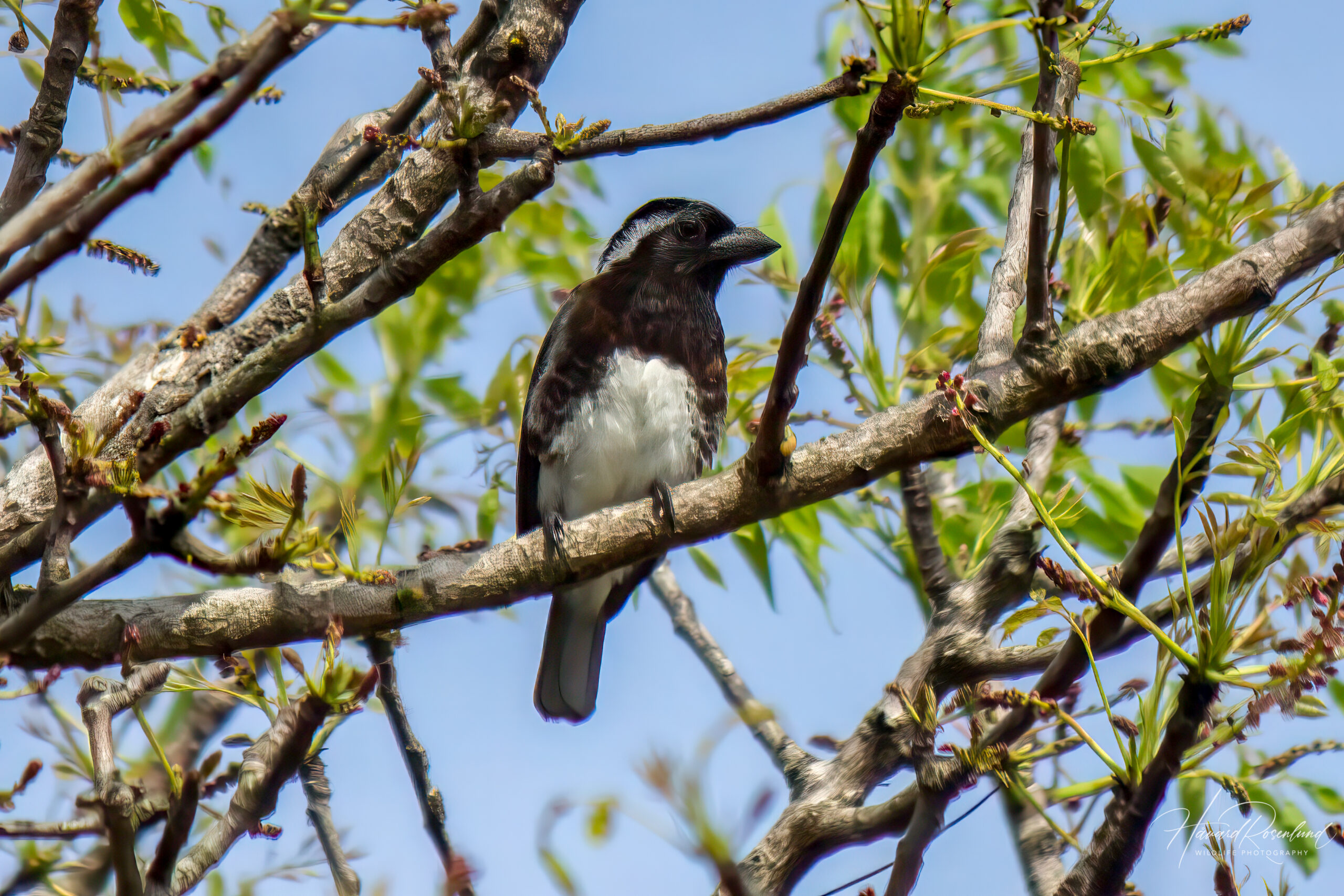Description
The white-eared barbet (Stactolaema leucotis) is a species of barbet with a range extends across the eastern regions of southern Africa, including countries like South Africa, Mozambique, and Zimbabwe. There are also a couple of populations in Tanzania and Kenya. This barbet typically measures around 20-23 cm (7.9-9.0 in) in length. The bird has a dark brown to black head and chest, with a prominent white ear patch that gives it its name. The back is dark brown and belly is white. These barbets are social birds, often seen in small groups. It is known for its loud and distinctive shriek-like calls, often heard when being social.
Diet & habitat
This species is versatile in its habitat preferences, often found in woodlands, forest edges, and gardens. It thrives in areas with abundant fruit-bearing trees, which form a significant part of its diet. The white-eared barbet feeds primarily on fruits, especially figs, supplemented by insects. It exhibits interesting feeding behaviors like fruit handling and insect foraging, often seen hopping along branches in search of food.
Nesting
The breeding season of the white-eared barbet varies but generally occurs during the warmer months. These birds nests in cavities, often excavating their nests in dead trees. They are social nesters, which means other members of the group aid in nest building, incubation, as well as the feeding of chicks. Individuals also take turn in standing guard to protect against possible threats. The incubation period typically lasts about two weeks. Fledging time for the chicks is approximately five weeks after hatching. The young often stay with the group for a year or more.
Status
The white-eared barbet is widespread and as a large distribution. It is believed to be decreasing in numbers, but is not considerer threatened at the moment. It is listed as least concern on the IUCN Red List.






